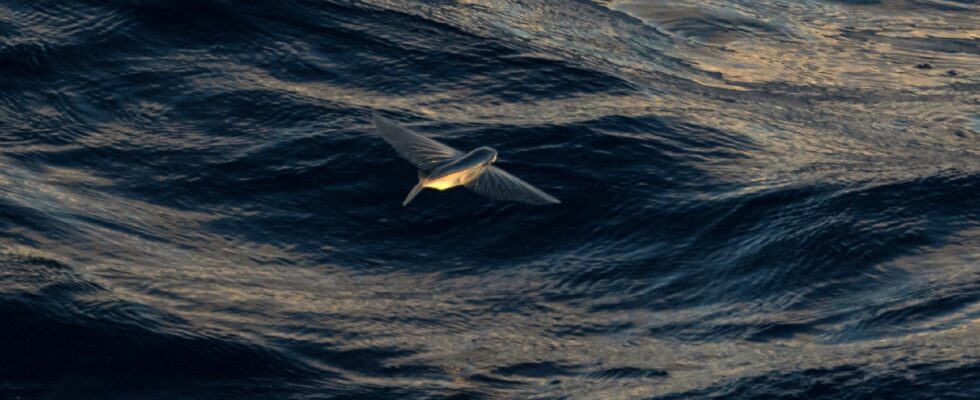The last session of the Intergovernmental Conference ended at United Nations headquarters in New York to loud applause for several minutes. After more than 15 years of discussions, including four years of formal negotiations, the Member States of the United Nations have finally agreed on the first international treaty to protect the high seas, intended to thwart the threats hanging over vital ecosystems for humanity.
“The ship has reached the shore”, announced the president of the conference Rena Lee, shortly before 9:30 p.m. (03:30 a.m. Paris time), and after 38 hours of talks. The exact content of the text was not immediately released, but activists hailed it as a watershed moment for biodiversity protection. “It’s a historic day for conservation and a sign that in a divided world, protecting nature and people can triumph over geopolitics,” said Laura Meller of Greenpeace. On Twitter, the NGO welcomed a “historic treaty”.
After two weeks of intense discussions, including a marathon session on Friday night to Saturday, delegates finalized a text that can no longer be significantly changed. “There will be no reopening or substantive discussions” on this file, Rena Lee told negotiators. United Nations Secretary-General Antonio Guterres congratulated the delegates, according to a spokesperson who called the agreement “a victory for multilateralism and for global efforts to counter the destructive trends that threaten the health of the oceans today. today and for generations to come”.
Marine protected areas in international waters
The high seas begin where the Exclusive Economic Zones (EEZ) of States end, at a maximum of 200 nautical miles (370 kilometers) from the coast, and are therefore not under the jurisdiction of any State. Even if it represents more than 60% of the oceans and nearly half of the planet, it has long been ignored in the environmental fight, to the benefit of coastal areas and a few emblematic species. With the progress of science, proof has been made of the importance of protecting these oceans, teeming with often microscopic biodiversity, which also provide half of the oxygen we breathe and limit global warming by absorbing important part of the CO2 emitted by human activities. However, the oceans are weakening, victims of these emissions (warming, acidification of the water, etc.), pollution of all kinds and overfishing.
When it enters into force after being formally adopted, signed and then ratified by enough countries, the treaty will create marine protected areas in these international waters. High seas protected areas can play a vital role in building resilience to the effects of climate change,” said Liz Karan of the NGO Pew Charitable Trusts, who called the deal a “momentous achievement”. protected areas, set out in the treaty, will place limits on the amount of fishing that can take place, the routes of shipping lanes, and exploration activities such as deep-sea mining – when minerals are extracted from a seabed marine 200 m or more below the surface.
In addition, the treaty on “the conservation and sustainable use of marine biodiversity of areas beyond national jurisdiction” also introduces the obligation to carry out environmental impact assessments of proposed activities on the high seas. .
Benefit sharing between North and South
Finally, a highly sensitive chapter which crystallized tensions until the last minute: the principle of sharing the benefits of marine genetic resources collected on the high seas. Developing countries, which do not have the means to finance very costly expeditions and research, have fought not to be excluded from access to genetic marine resources and from sharing the anticipated profits from the commercialization of these resources – which belong to no one – from which pharmaceutical or cosmetic companies hope to derive miracle molecules . As in other international forums, notably the climate negotiations, the debate ended up boiling down to a question of North-South equity, commented observers.
The countries will have to come together again to adopt the agreement and then have a lot of work to do before the treaty can be implemented. With an announcement seen as a gesture to build North-South trust, the European Union pledged, in New York, 40 million euros to facilitate the ratification of the treaty and its initial implementation.
The European Commission has also hailed a “historic moment” this Sunday morning. “We are taking a crucial step to preserve the marine life and biodiversity that are essential for us and for generations to come,” said European Commissioner for the Environment, Virginijus Sinkevicius. “Today marks the culmination of more than a decade of preparatory work and international negotiations in which the EU has played a key role”, he underlined.
In total, Panamanian Foreign Minister Janaina Tewaney announced that “341 new commitments”, amounting to nearly 20 billion dollars – including nearly 6 billion from the United States – had been made at this conference to protect the seas.
